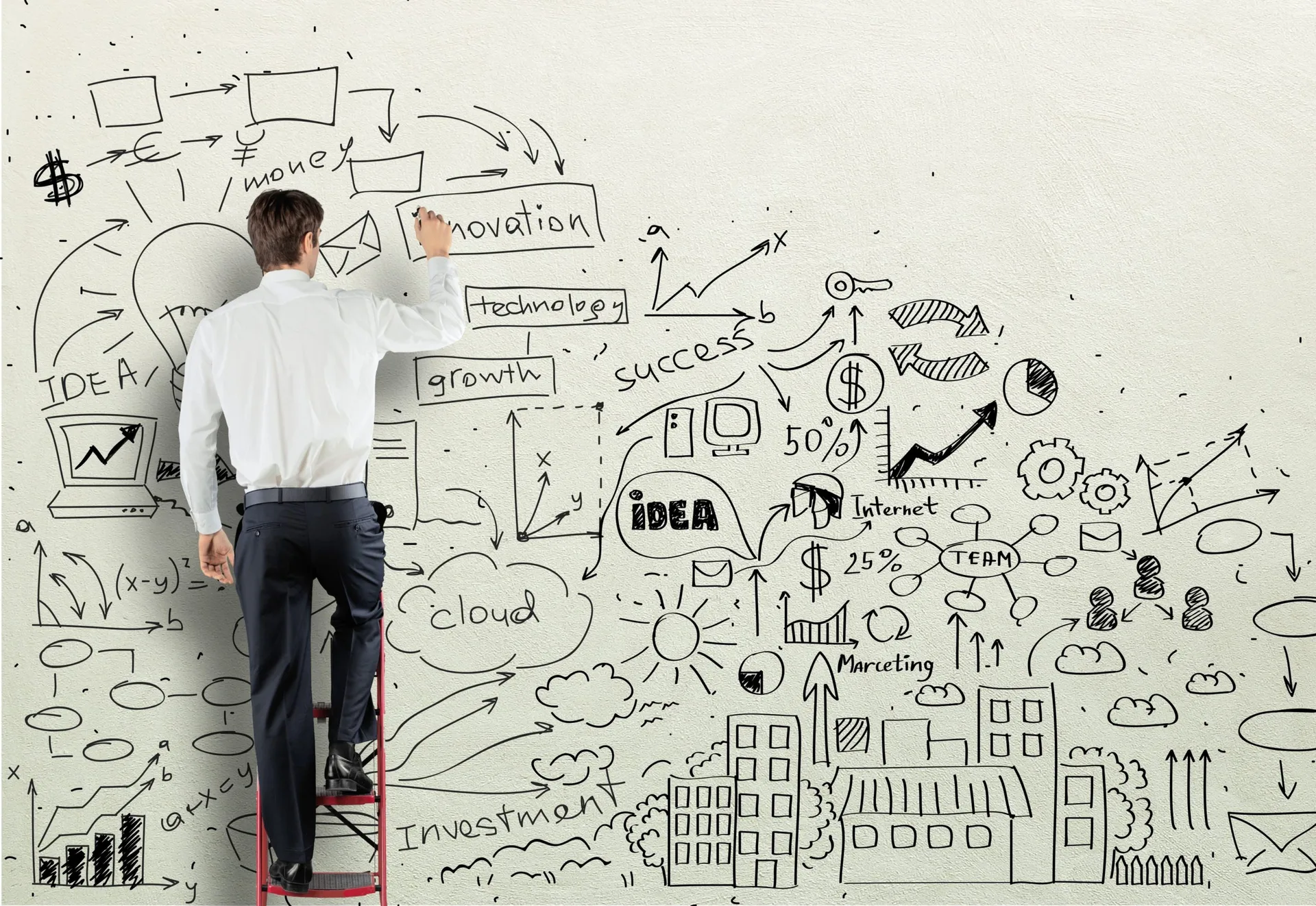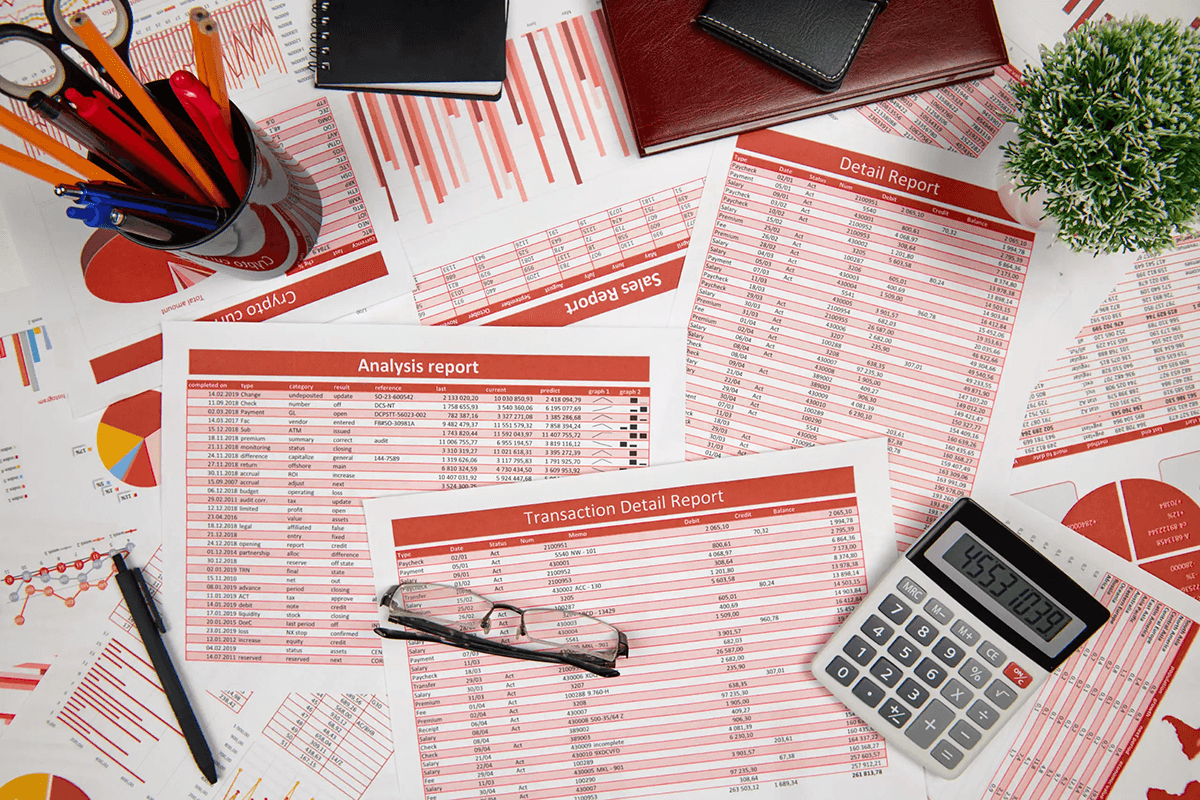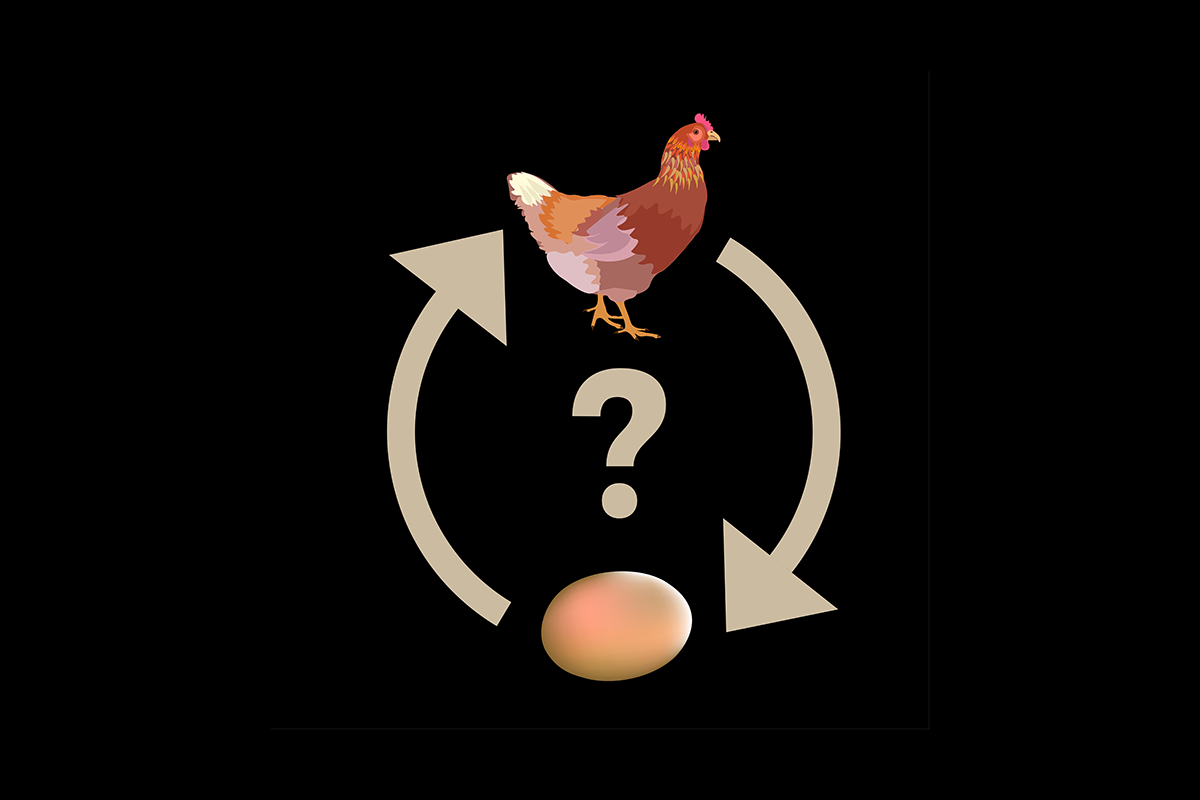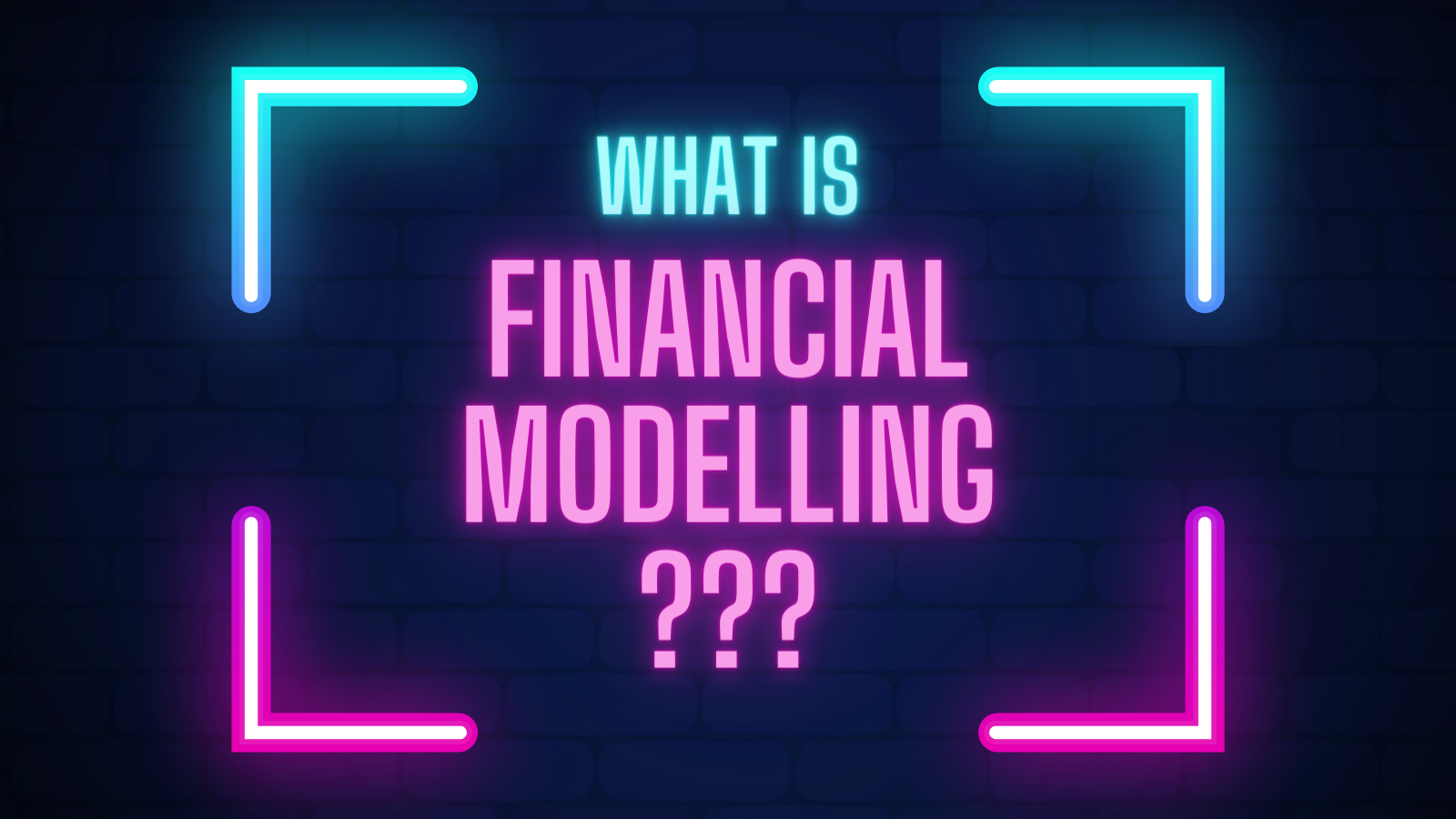
After years of experience, I was sure I knew... then I started freelancing!
Defining your service in a way that is succinct, yet substantive, is worthwhile. I don’t think you can improve much upon this Investopedia entry by Carol M. Kopp:
Financial modeling is the process of creating a summary of a company's expenses and earnings in the form of a spreadsheet that can be used to calculate the impact of a future event or decision.
I really like it!
It is brief; it doesn’t rely on technical language and, perhaps most importantly, it frames the explanation in value-add terms.
And from an outsider’s perspective… that’s what is key to answering the question. You have to be able to explain:
Why would somebody want this???
This isn’t just relevant to pitching… it will make you a better modeler too. Our technical choices need to be made in service of what ultimately adds value!
So this article will explore “What is financial modeling?” through the lens of how it adds value. We’ll see that modelers do this in four general ways:
- We create clear, detailed insights into how businesses generate, use, and distribute their cash
- We create holistic analyses which capture how the different parts of a business interact and work together
- We simplify business problems by clearly structuring them into assumptions, calculations, and outcomes
- We enable faster, quantitatively driven decision-making, with the creation of meaningful, reactive dashboard experiences
What's your elevator pitch?

I’m not going to lie to you, I still trip up on mine sometimes!
I started freelancing a few years ago, setting myself up to work remotely out of coworking spaces around the globe.
These are very stimulating places to be!
Everyone is working on something completely different, and you rarely have a clue what people are up to. So naturally… “Hi! What do you do?” crops up much more in daily life than it ever did before.
Now, I couldn’t just say “I’m a financial modeler”… That says NOTHING to people who don’t know what that is! (And basically, that’s everyone!) Each time I was asked, I found myself awkwardly stumble-rambling some response…!
Why was I so bad at explaining something I was so experienced at?
Well, if you offer a technical service, it is really easy to identify your work with its process rather than its outcome. It is the process that occupies most of your time, after all.
You’re usually fine not having to think beyond this. Our skills have a tidy label in the job market, and people hire you to perform *that* task. So, as employees, we may not feel much incentive to deeply understand and communicate how we create value.
But falling back on your work label can cost you… whether you are an employee or a freelancer.
As a freelancer, your work opportunities will be limited to people who already know what they want. (And at the start of your freelance career there may not be many of them around!)
As an employee, you are likelier to keep a passive and reactive approach to your role, always waiting on directions from others. If you understand why you are being hired, on the other hand, that empowers you to be more proactive in your decisions, identify opportunities for innovation, and to act on them.
So let’s do this…! It’s time to face up to the most important question affecting your livelihood…!
How do you add value?

How does what you do help someone else?
How does financial modeling help other people??
I can’t give a short answer here because… it depends!
Look back at Kopp’s definition. When she says that a financial model is “used to calculate the impact of a future event or decision”, that covers a very BROAD range of business problems!
I built my own modeling expertise in the field of “project finance”. Professionals in this area deal with specialised financing arrangements that fund new infrastructure developments like roads, power plants, airports, and so on.
Project finance deals are complex arrangements involving large sums of money. Deep and detailed modeling is absolutely necessary to meet lenders’ criteria to fund the project.
My value add in that domain was clear:
No model, no deal, no infrastructure. Simple.
Since going freelance however, I’ve worked on a much broader range of problems…
I was now creating models for venture capital raises; pricing option contracts for advisory services; creating profit and loss reports driven by point-of-sale data-streams; reviewing legacy VBA code for custom financing structures; analysing investments to restructure company capital…
To give each of these clients solutions with a good and proper fit, I couldn’t just repeat what I had been doing before. In each of these new business cases, the financial model adds value in slightly different ways, and the design of the tool needs to change accordingly.
But yet, there I was, handling a broad range of problems with a single set of skills and body of knowledge.
How could that be possible if they did not have something in common…??
It's all about the money...!

Cash. It’s why we don’t trade chickens for a haircut.
Cash is the lifeblood of every business. Resources flow in and out of a company in exchange for cash. So cash is vital to HOW a business is run, but is also WHY businesses are run as well.
We do business to generate more income than we spend (i.e. turn some kind of a profit!) That surplus then gets distributed to stakeholders, in line with their roles and claims: as wages, interest payments, dividends, and so on.
We financial modelers add value by shining a light on this central concern of business life.
If you understand how your company is going to make, manage, and distribute cash, you can:
- Improve your profitability
- Improve your use of cash and credit
- Plan and budget for your future growth
- Assess large expenses to see if they are worth it
- Negotiate terms to bring in outside funding
- Value your company for sale, or another for acquisition
ALL these issues concern the financial management of company resources. That means they all can be addressed within the frameworks of accounting and basic financial theory.
This explains why we call it financial modeling…!
It also explains why I have been able to solve such a broad range of problems with a single skill-set…!
So how do we generate these financial insights?
The answer lies in the art of modeling!
As simple as can be... but no simpler!

“What is a model?”
Careful! This can become an abstract discussion!
We want to focus on tangible concepts here, so let’s use a simple working definition:
The goal of a model is to accurately simplify a chosen subject.
The key words here are “accurately” and “simplify”.
Accuracy matters because our model needs to line up with reality!
Simplicity, on the other hand, has value because it reduces the time and cognitive load needed to understand information, and to act on it.
Putting those two together tells us that a good model should make a subject as simple as possible, but no simpler than is needed for it to be accurate.
As a financial modeler, you add value not just by showing how financial resources are going to be used, but making this information easy to understand, process, and think through.
How do we do that?
Let’s start off by borrowing a technology that’s been around for hundreds of years…
The language of business

The need to track what goes in, what goes out of a company, and how much is held as stock is as old as business itself. We just can’t store everything in our heads, and accounting developed to meet these needs!
At its heart accounting is a way of describing events. But that means we can use it to describe future events as well! And doing this affords us many advantages:
- We use terms and concepts understood by company managers the world over
- We can communicate our analysis to people outside the company
- We can join our model’s future events, to real historic accounts
- We can break down our analysis into simple parts, using granular accounting concepts
- We benefit from the error checks built into modern accounting via the double-entry system
So… is financial modeling just accounting… but for the future??
NO!
We are only using accounting as a language or framework to describe future events and activities. Financial modeling is fundamentally different because of one key detail…
The future is not yet written...

Accounting looks back at the past to create a structured record of facts.
But the future’s “facts” haven’t happened yet!
What do we do instead?
Well, we start with the insight that businesses are not accidental processes. A business, and its activities, are oriented to achieving goals.
The premise underlying managerial action, is that we can influence business activities to reach our goals more effectively. We can shape how a business operates. That allows us to form expectations about future business operations on that basis
And this is where we get to the heart of what a financial model is…!
Underneath it all…
a financial model models how a business runs as a whole.
The model’s relationships capture how business processes should operate, depend upon, and affect each other, in line with management’s expectations.
But management can’t control everything!
External factors make up the company’s operating environment, and the events to which it reacts. To be complete, our model has to include these factors and define the expected business responses to them.
All in all, that tells us that we can build our financial model with two kinds of items:
- Set values, that are decided by management, or given by the environment
- Calculations, that depend upon these values, and/or each other
From one... Many!

Recall that our model calculations are driven by a set of fixed values. They represent ONE, particular set of circumstances assumed about future management choices and external events.
But business processes are able to handle a range of circumstances. For example, we typically don’t need to change our processes to handle a 10% rise in sales or a 15% increase in costs.
This is exciting! It means that the calculations that model our business processes, are just as flexible as the processes themselves!
In short:
ONE model can forecast MANY possible futures!
And here’s the real gem…!
We can build these really rich, flexible models in Excel, and they are usually light enough to run reactively. By this, I mean that as soon as users change the input values, the model outputs update as well!
This capability can support user experiences that are very dynamic. You can explore different planning and business scenarios more or less at the speed at which you can think!
Additionally, this style of model construction itself offers added clarity of thought. It clearly structures the variables of our business into drivers and outcomes. That helps frame and simplify the problems we need to think through.
All these are fantastic value adds!
But to unlock all this potential, financial modelers need to be skilled at spreadsheet engineering and dashboard design. They also need to have a clear understanding of the business, its needs, and their relative importance. That is what empowers a modeler to bring key business drivers and metrics into a meaningful ,single view, and to create interfaces that allow us to explore problems in a live, interactive way.
Once you have this kind of setup, you’re freed to explore a wide range of possibilities and outcomes! And as you do, you may see some patterns begin to emerge…
Understanding cause and effect

Driver-based models are explicitly causal. They are built upon the premise that business activities are the result of deliberate human actions.
We just saw that by building our models with live calculations, we get considerable flexibility thrown in for free.
If we use this flexibility to vary our assumptions systematically,
we can map out relationships between cause and effect.
Techniques like scenario analysis, sensitivity analysis, and even Monte Carlo analysis can be applied to explore how outcomes respond over a range of driver values, and to estimate the likelihood that outcomes will occur.
Again, the mathematical build of the model brings a degree of precision not achievable by back-of-the-envelope estimates. Furthermore, the interactions we have modeled between different business processes can reveal some surprising results we wouldn’t otherwise anticipate.
This is another amazing value-add!
Once again, unlocking this potential rests on the expertise of the modeler.
A good financial modeler will know how to leverage Excel’s flexibility to build scenario managers or Monte Carlo samplers directly into the same model, evolving it into a tool that’s capable of risk analysis as well!
“So, what do you do again?”

We’ve covered a lot of ground!
By exploring how financial modeling adds value, we can definitely stand by Kopp’s definition that:
“Financial modeling is the process of creating a summary of a company’s expenses and earnings in the form of a spreadsheet that can be used to calculate the impact of a future event or decision.”
But we can really unpack this now!
The idea isn’t to bring all that we’ve covered into a single elevator pitch, but to have that understanding held in reserve. That is what will allow you to tailor your pitch to the persons in front of you, and respond with nuance to they follow ups you get in response!
What’s my pitch, you ask?
Well, it’s always a work in progress…!
But right now, it goes something like this:
- I make mathematical models to help business owners and investors make better decisions.
- I structure and simplify their business problems and calculate how money is made and distributed by their businesses, in detail.
- The models are flexibly designed, so you can explore how different possibilities impact your outcomes.
- My clients usually use the models to raise money; improve their business planning, financial management, and profitability; or value a company sale or acquisition.
How about you…??

Roderick is a blockchain professional, specialising in tokenomics advisory and economic design.
His advisory contributions have helped raise over $100m for blockchain startups, and he brings over 10 years of prior quantitative modelling, financial analysis, and transaction experience to his work.
He resources the innovative thinking needed for this emerging field with strong academic foundations that include a MSc. in Economic Policy from UCL, and the CFA Charter.
Roderick is inspired by the potential he sees for blockchain technology to address old, long-standing economic issues that many students are still being taught are impossible be solve.
A life-long learner, he eagerly participates in knowledge building by sharing his expertise through open blog and video content, and by offering specialised training courses to help aspiring professionals start out and advance in this field.
